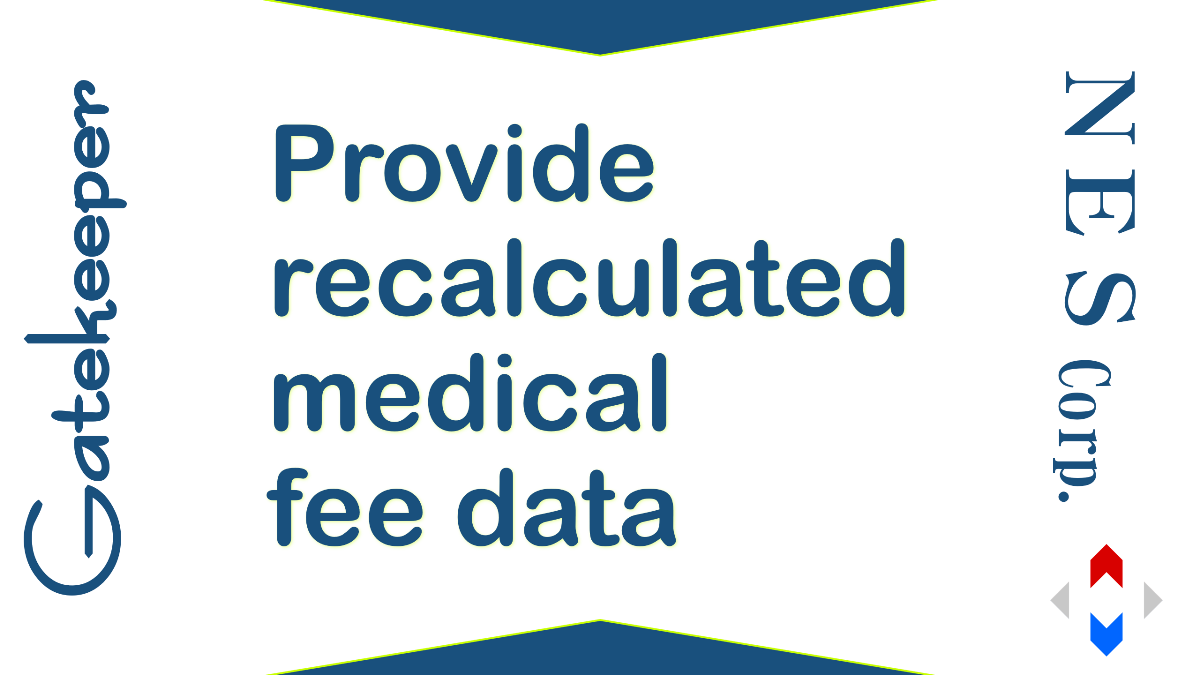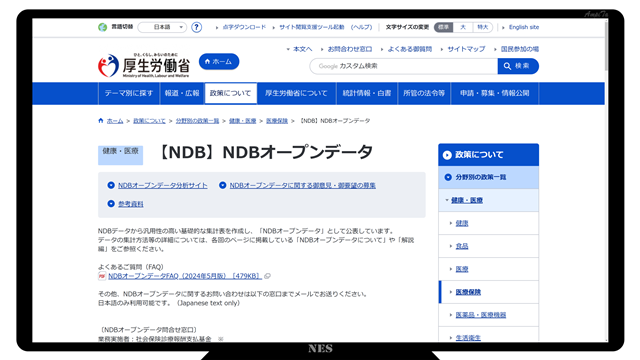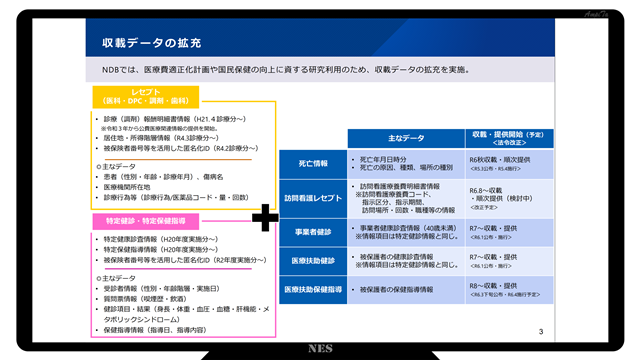
Press release
About the independent development of the NDB aggregation system of the Ministry of Health, Labour and Welfare and the provision of data
We would like to express our sincere gratitude for your understanding and support regarding our business.
At our company, which promotes medical DX, we have made it a unique database of data published by the Ministry of Health, Labour and Welfare and the Pharmaceuticals and Medical Devices Agency (PMDA). We have developed a system that converts the NDB (NDB) related information database (NDB) provided by the Ministry of Health, Labour and Welfare into a unique database, and it is now possible to perform its own aggregation.
The number of Excel files in the first NDB open data containing receipt information in FY2014 was 83pc. The latest 9th edition is 402pieces, and if you count it with an Excel sheet, it exceeds 1,000 sheets, and there are more than 4,000 sheets in it. Since outpatient and inpatients are aggregated separately, it is necessary to collect data on one master code from multiple sheets. In addition, Excel files such as by sex age, month of treatment, prefecture, and secondary medical treatment area are provided. Until now, we have been manually collecting Excel files for multiple years, but in particular, there are many types of pharmaceuticals, including late products, and it took a lot of time and effort to compile and overlook them.
Therefore, we have developed a system that facilitates aggregation and output and reduces the possibility of aggregation omissions. The system will import all NDB Excel files published by the Ministry of Health, Labour and Welfare and build their own database.
We have already started using in-house data analysis, but we have obtained targeted data at a speed that is incomparably faster than before, so it is possible to significantly reduce the time required for multi-faceted analysis.
From today, we have lined up receipt data for the sales service of medical data.
We believe that “data is used twice to increase in value”, and we are working to strengthen the database that serves as the foundation for the idea that data will be widely used. We will continue to build a new database in the future.
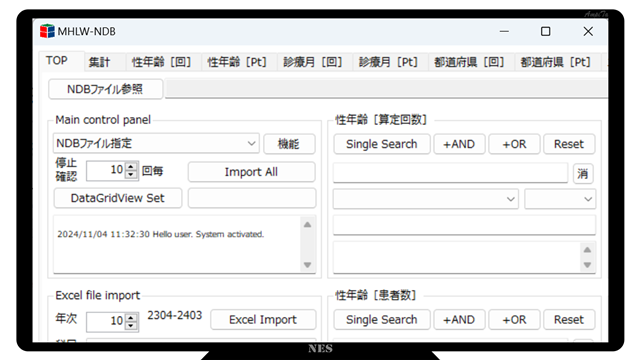
November 11, 2024
NES Corporation
For inquiries about this matter, please click here .
This information is for Japan.
Ministry of Health, Labour and Welfare NDB Open Data
In Japan, which has a universal health insurance system, the cost of “insurance treatment” is stipulated to be the same regardless of age and age.
Medical fees that medical institutions claim from insurers are coded, and the information linked to that code is published as NDB (Information-related information such as Anonymous Medical Insurance).
Complicated
If you unravel what is lumped together with the medical fee, there are many classifications and classes.
In general, insurance medical institutions can be divided into three categories: medical, dental, and dispensing (pharmacies). Items with insurance points include medicines and medical treatment materials.
Medical treatment activities include the first visit and re-examination at an outpatient clinic, starting with the addition of necessary medical care such as examination, treatment, hospitalization, surgery, etc., and each time medical treatment fee is also charged.
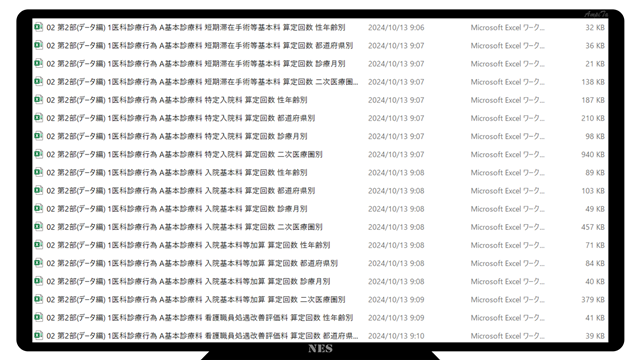
- 1st NDB Open Data Excel Sheet List
- The 2nd NDB Open Data Excel Sheet
- The 3rd NDB Open Data Excel Sheet
- The 4th NDB Open Data Excel Sheet
- The 5th NDB Open Data Excel Sheet
- The 6th NDB Open Data Excel Sheet
- The 7th NDB Open Data Excel Sheet
- The 8th NDB Open Data Excel Sheet
- The 9th NDB Open Data Excel Sheet
Expanded
Medical fee data is increasing every year.
According to the data released by the Ministry of Health, Labour and Welfare, the data of NDB will be expanded in the future.
Vertical and horizontal analysis
The number of times and patients are reported to be collected by various factors, including gender, age, month of treatment, prefecture, and secondary medical treatment.
In pharmaceuticals, even if the product has the same effect, they have different receipt codes depending on the product, so if you are asked to “check the amount of asthma medicine used”, first list the asthma drugs, find each from the Excel file, and check whether it is not calculated separately for outpatient and hospitalization.
Medications are complex. Even if the drug of the same name is different, the code is different depending on the concentration and capacity. For example, if you want to examine Parmicoat inhalation drugs, you need to list three types of inhalations and collect data such as gender, age, month of medical care, prefecture, and secondary medical treatment area.
- Parmicoat 100μg turbu-haler 112 inhalation
- Parmicoat 200μg turbulent healer 56 inhalation
- Parmicoat 200μg turbulent 112 inhalation
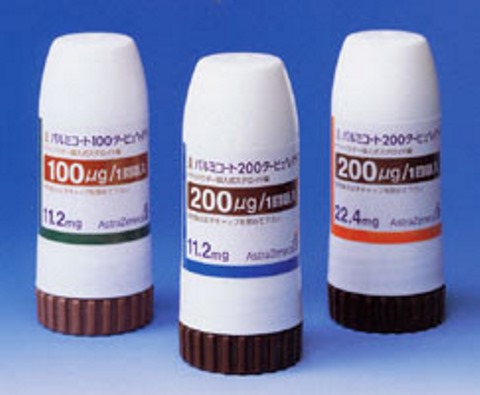
Since Excel by gender age is divided into five-year-old classes, it consists of nineteen rows of men and nineteen rows of women.
There are twelve clinics per month.
It is forty-seven rows by prefecture.
That is, these cannot be arranged vertically because the number of columns is inconsistent. If you arrange it side by side, the above three items alone will be 97th row, and the secondary medical area is over 300th, so you will use about 500rows on the Excel sheet.
It will be very complicated.
However, you cannot analyze these data without aggregating them.
Import process
The NDB files provided by the Ministry of Health, Labour and Welfare are divided into subjects and chapters, so first classify them and import them.
There are two types of medical, dental, and dispensing distinctions, the number of calculations and the number of patients, so we also build a database separately.
As shown in the figure below, when importing, the file type is selected from the drop-down list, but it is basically automated.
When the file is selected, these drop-down lists are automatically selected, and when importing, you are checking the Excel sheet to check whether it matches the files in the target category from the number of columns.
It has a Foolproof function to prevent it from being accidentally listed in the database.
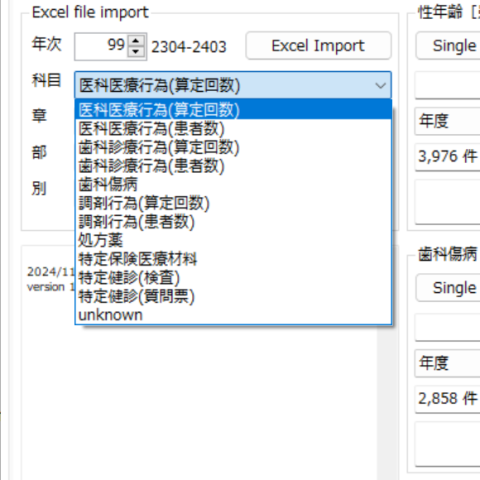
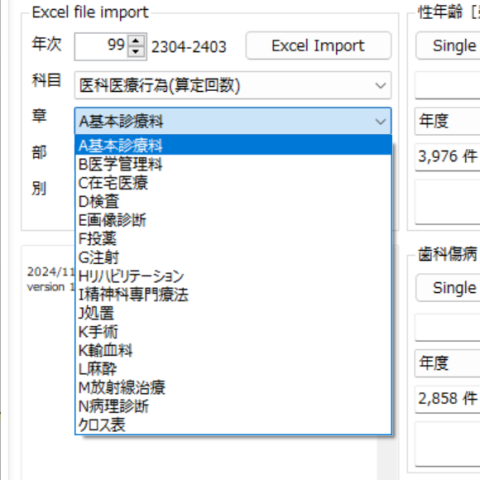
Multi-year bulk aggregation
The one that had to open the Excel file individually, but our own system can handle everything on one screen.
If you type “Parmicoat” as the search word and search, you can see the total number of past prescriptions.
You can narrow it down to the latest 9th, or you can narrow it down to everything after the 5th.
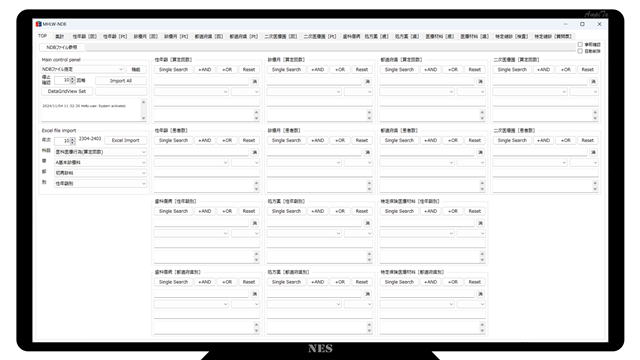
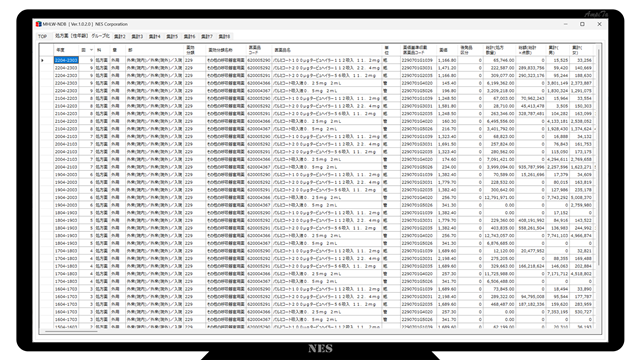
Excel file provided
We use our own system, but we output Excel files and provide them to our customers.
Since it is easy to graph by using an Excel file, you can get the analysis results like the figure below, for example.
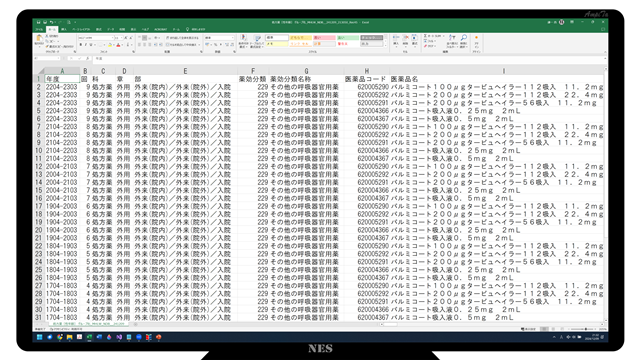
In fact, you can see the results of narrowing down by typing “Parmicoat” with our own system.
When the result is aggregated, it looks like the figure below. The orange color is the medical expenses, and the blue color is the number of calculations.
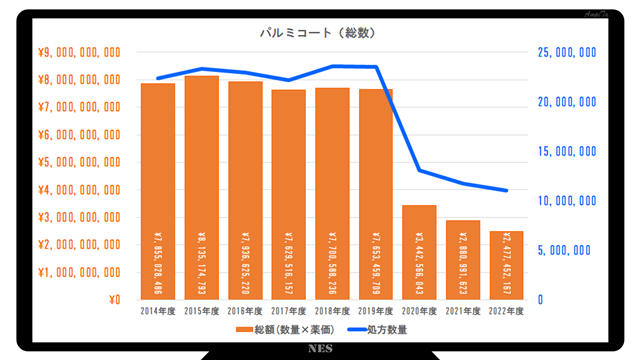
The type of parmi coats that patients inhale with their own hands are as shown in the figure below.
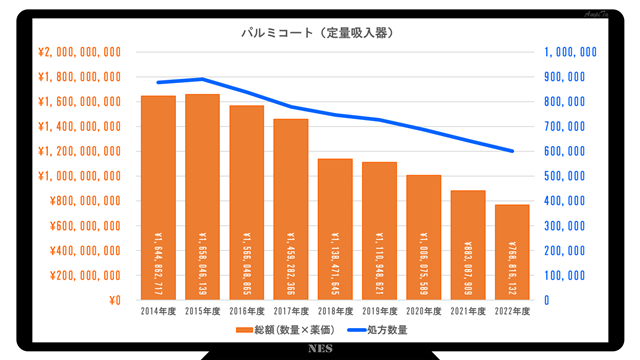
The parmi coat of nebulizer therapy performed in otolaryngology is as shown in the figure below.
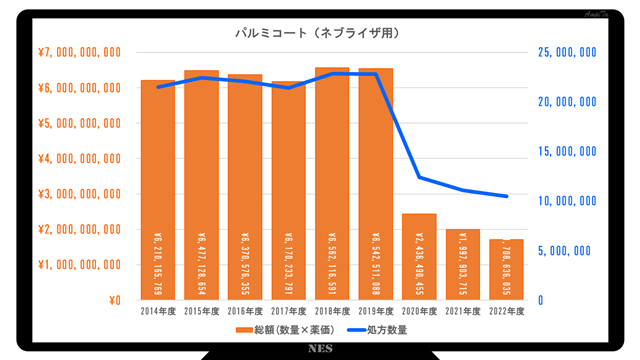
Original system “MHLW-NDB”
The system for Aggregating NDB Open Data from the Ministry of Health, Labour and Welfare is a system for internal use of our company.
The system is called MHLW-NDB. I plan to change it when I come up with a good name.
The icon is as shown in the figure below. The database-like shape, red and blue are referring to the logo mark of the Ministry of Health, Labour and Welfare. I was asked to think about the idea by Chat GPT.

System Overview
The system was developed by us and the AmpiTa Project in the C# language using Microsoft Visual Studio 2022.
Because it is a closed system for internal use, the screen is cheap, but it has the necessary functions.
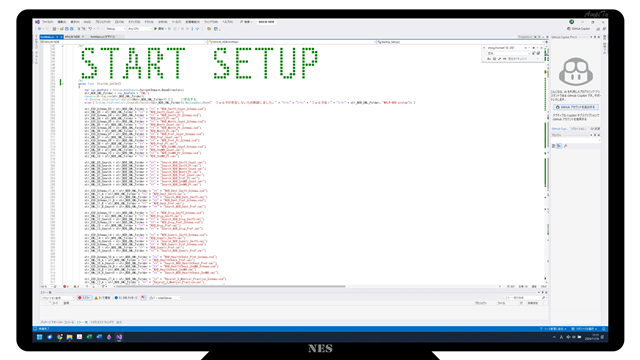
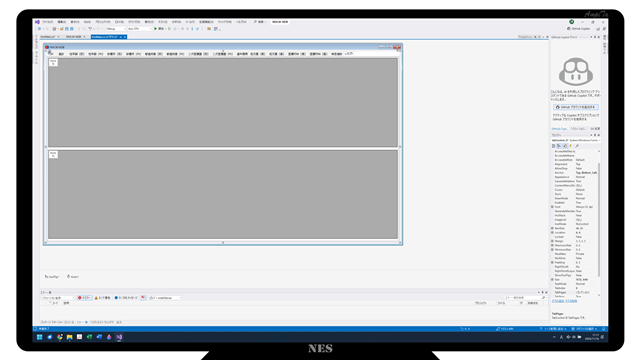
In the control screen, import, export, and perform narrowing and instructions.
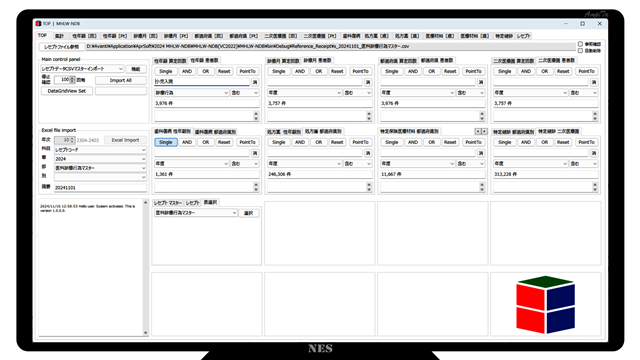
The database can be grided individually.

The contents displayed on the grid can be exported as a CSV file, and the CSV file can be converted to an Excel file by opening the CSV file with a spreadsheet software such as Microsoft Excel, or PDF output and print output are supported.
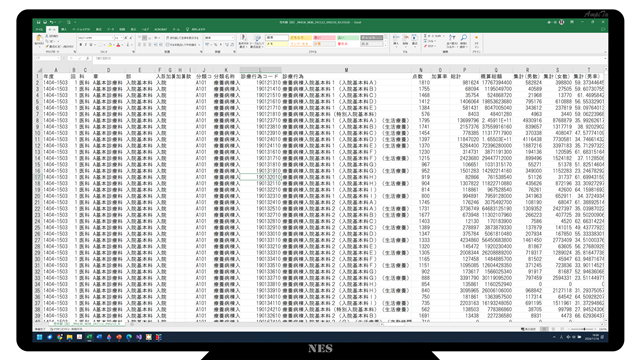
Manual
We will post some of the internal manuals. What is displayed here is version 1.0.0 of MHLW-NDB.exe. The system is constantly updated.
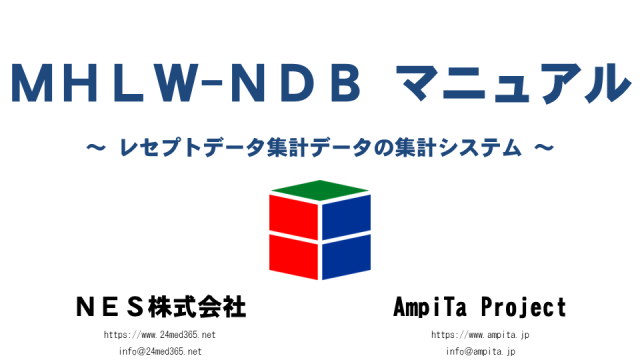
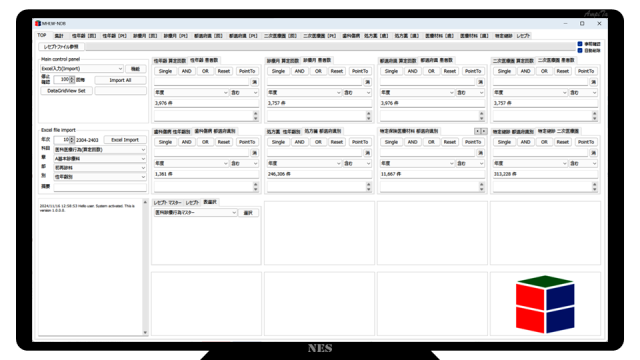
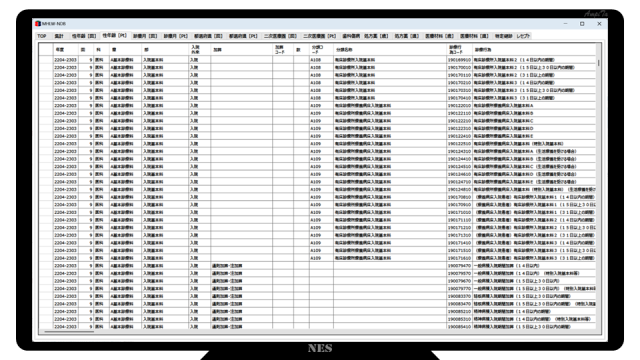
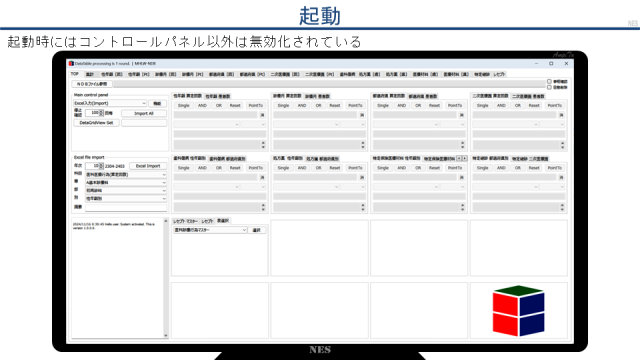
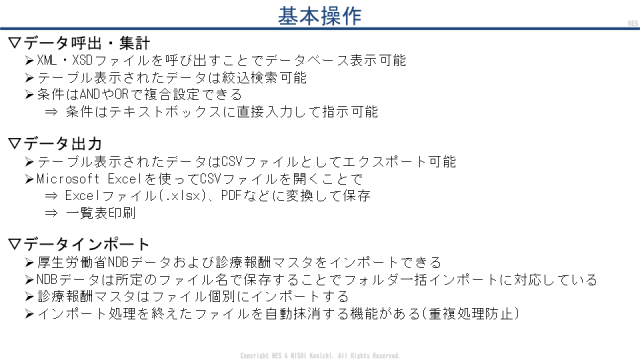
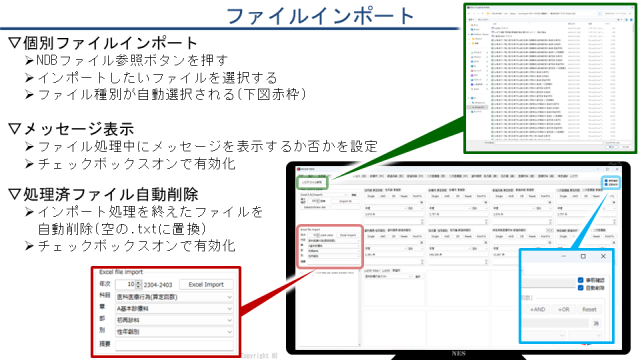
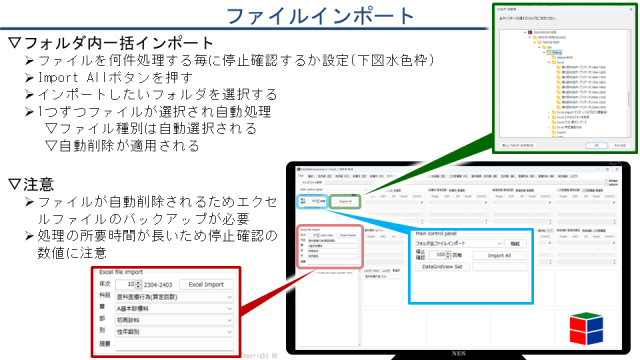
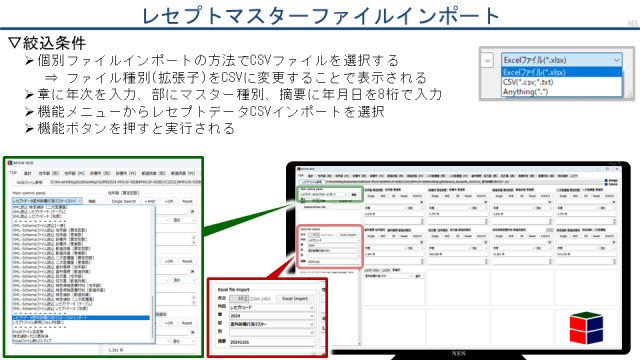
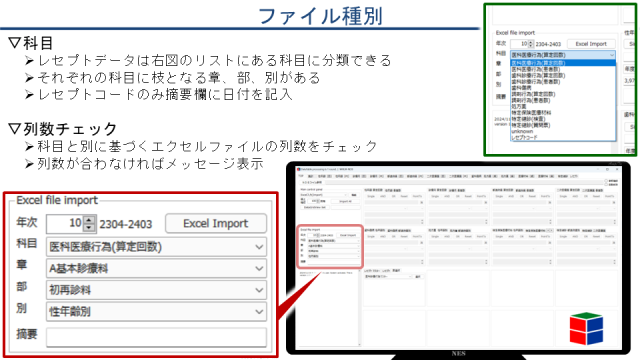
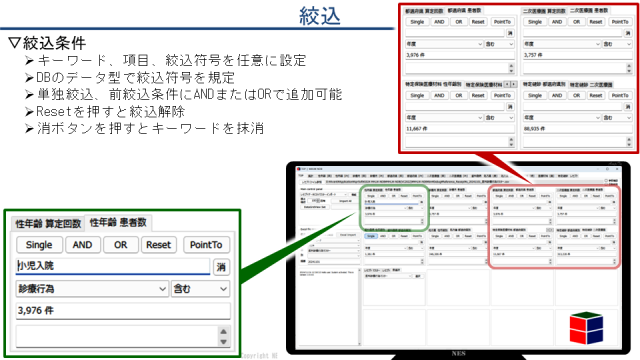
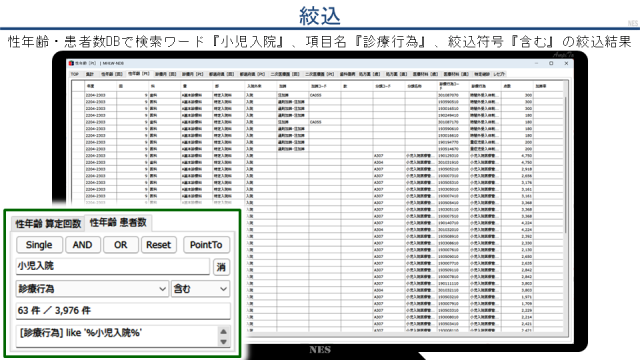
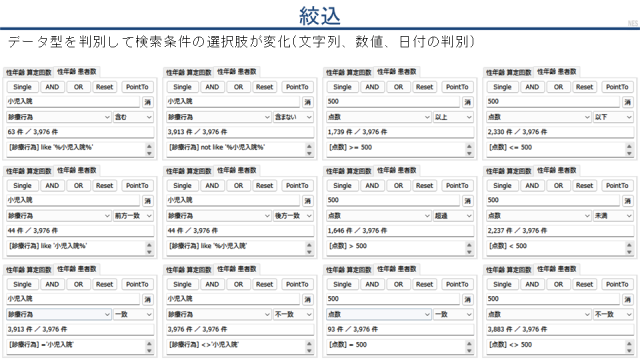
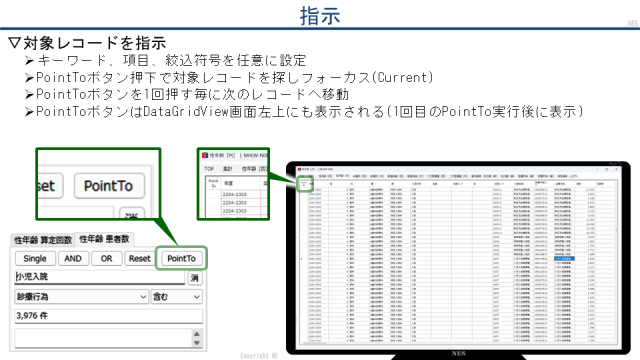
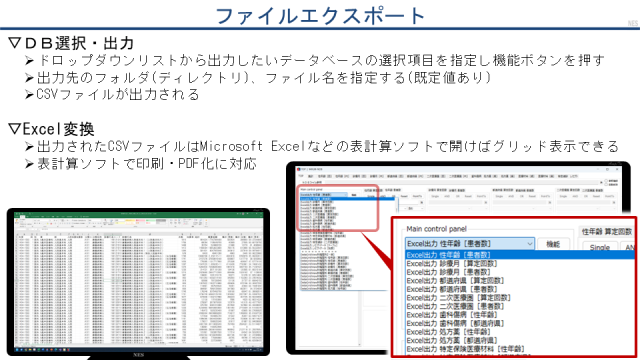
Related pages
- Developed and started providing a web database of clinics and hospitals free of charge.
- In-house development and provision of a database on the status of facility standard filings by insured medical institutions begins.
- Population data for secondary medical care area
- Started providing free Excel data of nationwide list of medical institutions and developed a tabulation system in-house.

